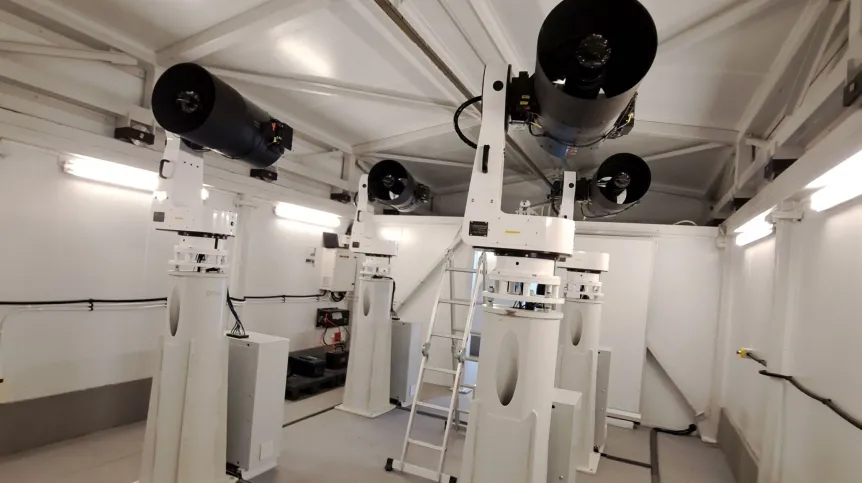
Three sets of state-of-the-art space observation telescopes will guard Europe's 'satellite family' against space debris and other threatening objects. This is the largest Polish astronomical investment of this type in years, the Polish Space Agency (POLSA) reports.
'Sentinel' is an advanced Earth observation technology essential to the average person. Satellites provide services such as navigation, internet and television.
Three sets of telescopes - POLON Australia, POLON Africa and POLON Chile – will make Poland a European leader when it comes to technological possibilities of space observation, POLSA reports. The commissioning of two more observatories is planned for next year (in the USA and in Hawaii). The development of this network means that Poland may become a leading European supplier of observational data, we read in the release.
The project was carried out in collaboration with the Polish companies Sybilla Technologies from Bydgoszcz and Cillium Engineering from Toruń. This is one of the key activities in the area of space security carried out by POLSA in the first half of the year.
Each of the three sensors consists of a system of 4 telescopes. Such a set of four telescopes (optical tubes) is capable of simultaneously observing a field of view of more than 170 square degrees (about 15 degrees by 11 degrees). The telescopes, placed on independent high-speed arms (assemblies), are equipped with high-resolution digital cameras. They can conduct observations independently of each other or cooperate to observe a larger fragment of the sky.
According to information on the POLSA website, the location of the telescopes is not accidental. Locations in the observatories: Siding Spring Observatory (Australia), Deep Sky (Chile) and South African Astronomical Observatory (South Africa) provide some of the best conditions for astronomical observation in the world. Each of them has about 300 observation nights a year. In each of these locations, the set of four telescopes can make up to 100,000 individual measurements of positions of artificial satellites in one night.
Satellite position measurements are used to supplement and update the database and the directory of space objects, on the basis of which information services and analysis of threats in space are prepared. Observations with telescopes allow to monitor and determine the constantly changing orbits of satellites and anticipate potential threats.
The new sensors can take several dozen images of the sky per second. The images are analysed using the 'synthetic tracking' technique. This enables scientists to observe very small space objects with a size of less than 10 cm and monitor most Earth orbits. ABOT and Astrometry24.Net software has been on the POLON network sets. These are Polish products created as part of projects developed at ESA under the Polish Incentive Scheme and NCBR grants.
The investment is financed in half by the European Commission, the other half comes from the state budget. Its total value is PLN 34 million. (PAP)
PAP - Science in Poland, Karolina Duszczyk
kol/ bar/ kap/
tr. RL













